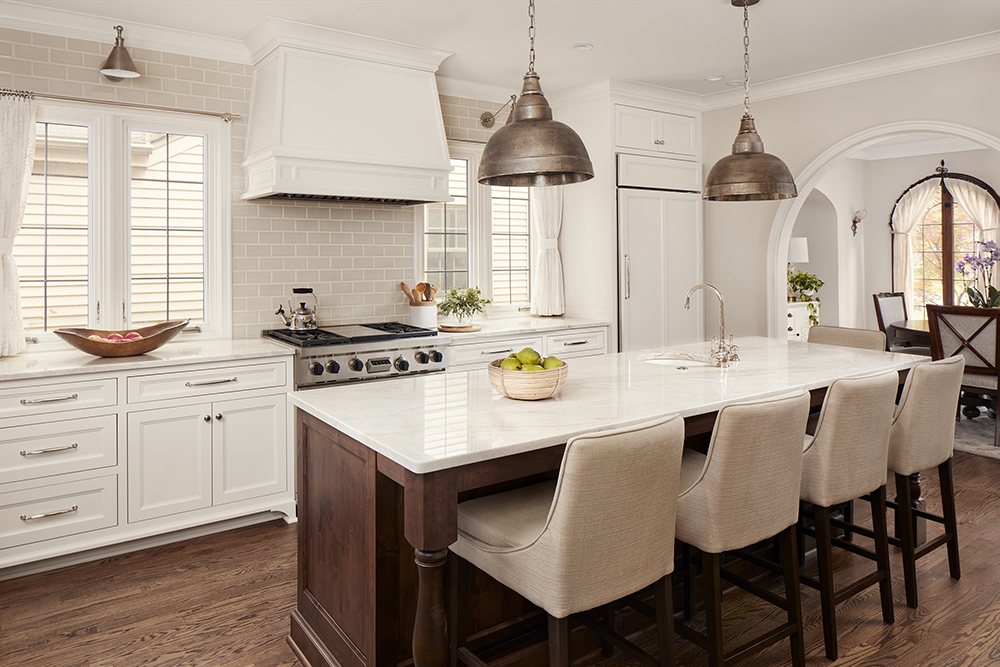When you think of wallpaper does your mind drift back to the patterns and materials of a bygone era? “Sometimes when I suggest wallpaper in a space, I brace myself, wondering if my clients are going to toss a pen at me,” says Heather Scott, Interior Designer at Bartelt. “They are still recovering from the removal of their 1990s wallpaper.” But in recent years, we are seeing this design element make a major comeback. With a wider selection and creative applications, wallpaper can be a fun detail, adding dimension and interest to a space that oftentimes paint cannot achieve.
Why Wallpaper?
Wallpaper isn’t tied to one particular style. With so many options – fabric, grass cloth, metallic, cork, subtle patterns, graphic or geometric designs – wallpaper can complement a contemporary space as well as traditional homes and everything in between.
Beyond its versatility, wallpaper is an easy way to add texture or drama to a space. Use it on an accent wall. Highlight an architectural detail. Put it in an unexpected spot such as on the ceiling or in a window nook. Wallpaper allows you to enhance a space’s style without adding more stuff to a room.
How Do I Choose Wallpaper?
The first step in choosing wallpaper is evaluating its role in your space. What is your design goal? Are you adding depth and texture? Do you need a pop of color? Are you trying to soften a space? Do you want to create that “wow factor?” Answering this question will determine the type of wallpaper that will work in your home. If you’re trying to make a statement, a subtle pattern probably isn’t the best way to achieve that. If you’re looking for another layer of texture, perhaps a natural material will suit your space.
Another good practice is to start a collection of inspiration photos to determine what you’re naturally drawn to. This will help you see if certain patterns or themes emerge. It’s important to make sure the wallpaper matches your style rather than a fad, so you won’t grow tired of your choice. Houzz, Pinterest, home blogs and magazines are great design sources, and a professional interior designer can help you pull it all together.
Our last piece of selection advice is to pick up large samples to bring home and put on your wall. Then you can decide if the wallpaper complements the colors, patterns and furniture in the room. Leave the samples up for at least 24 hours, so you can see how it transforms throughout the day as the light changes.
Where Should I Incorporate It?
There are really no rules when it comes to wallpaper placement, but we often see it in rooms where you don’t necessarily spend a majority of your time to avoid “wallpaper fatigue.” Bedrooms, guest rooms, formal dining rooms, libraries, hallways and powder rooms are all common spots to spice things up with wallpaper.











Leave A Comment